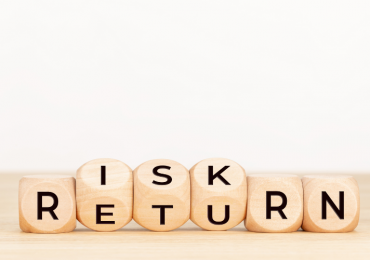By Jack Forehand (@practicalquant) —

There are many misconceptions about private equity investing. Many investors view it as a domain where the rich and institutions earn outsized returns that are not available to the average person. It is viewed as an exclusive club with huge benefits that only the elite can be part of. But at its core, private equity is just investing in companies much like public investing is. It is a bet on the discounted value of the future cash flows of a business. So it turns out that it isn’t as magic as many people think and things like how much you pay for a company relative to its earnings and cash flow matter just as much in the private equity world as they do in the public one.
In their paper Leveraged Small Value Equities, Brian Chingono and Dan Rasmussen were able to show that much of what private investors do can be broken down into a quantitative model that produces similar returns as the private equity space without the illiquidity and limited access that comes with it. They now use the lessons from that research in managing portfolios for clients through their firm Verdad Capital.
In this week’s interview, we talk to Brian about private equity returns, what drives the asset class’s returns, and how a private equity-like investment approach can be applied to public markets.
Jack: Thank you for taking the time to talk to us
There is a perception that private equity investors have received significantly better returns than public equity investors over time and that those returns cannot be replicated in the public markets. Even beyond that, many believe that the top tier private equity firms have been able to produce returns well beyond the average and that those firms have persisted as the best over time. How much of that is true based on your analysis of the space and what did your research show about the long-term returns of private equity and whether they can be replicated in public markets?
Brian: Prior to 2006, the vast majority—maybe as high as 85%—of private equity funds outperformed the public markets. But a recent study by Pitchbook found that 2006 was the last year in which the majority of private equity funds outperformed the public market. Since then, the median PE fund has underperformed the public market equivalent.
The key thing to study is: what did PE managers do pre-2006 and what changed post-2006? Private equity firms have always bought companies that are much smaller than public equities (median market cap of around $200M in PE vs. $40B for the S&P500) and much more leveraged (average Net Debt/TEV of 60% in PE vs. 10% for public equities). That hasn’t changed pre-2006 to post-2006. What has changed is purchase prices. Pre-2006, the average purchase multiple in private equity was under 7x EBITDA. Post-2006, it’s been above 10x EBITDA. Pre-2006, PE paid on average a 40% discount to the purchase multiple of the S&P500; post-2006 there has been no discount.
Our take-away from this is that private equity returns were driven by buying small companies with leverage at big discounts to the broader market. This makes sense philosophically: small, cheap, leveraged companies should have big upside if they can get larger, pay down debt, or increase their multiple.
We tested this for ourselves in public markets and found that investors could have achieved returns comparable to the gross returns of PE by investing in leveraged small value public equities (remember, PE charges about 6% per annum in fees on average). Best of all, the leveraged small value opportunity in public markets is as big post-2006 as it was pre-2006. Investors can use these quantitative rules like a time machine and build portfolios with the same quantitative characteristics—and the same return characteristics—as 1980s LBOs and avoid today’s overpriced, auction-driven private equity market.
Jack: In your research, you were able to find a series of characteristics that were common among successful private equity investments and apply them to public markets. But many in the private equity space would say that their hands-on work to turn around companies is a big part of their returns and that can’t be quantified. What were the characteristics that you found led to successful private equity outcomes and how can they be applied to public markets?
Brian: One of my business school professors at the University of Chicago described private equity as “small value on steroids”. In other words, buying small, cheap companies with leverage explains the historical outperformance of private equity. Looking at public markets between 1963 and 2018, the US small value index compounded at 15% per year, versus 10% per year in the S&P 500. Since leverage amplifies outcomes, is it any surprise that PE has historically outperformed the S&P 500?
A common counter-argument from the private equity community is that management skill plays a role because PE funds have control over their companies. Taking that argument at face value, lets assume that at least some PE managers possess sufficient skill to cover their fees. The key question is how prevalent is this managerial skillset? Should we expect to find it in the average PE manager or only on rare occasions?
Since private equity managers are trained at the same business schools, investment banks, and consulting firms as public market managers, we can look for clues regarding skill in the public market dataset, which offers a much larger sample size. Eugene Fama and Ken French evaluated US mutual fund returns between 1984 and 2006 to determine the prevalence of skill. They found that two-thirds of active managers underperform their benchmark after fees. This is worse than a chance result. If the average active manager possesses zero skill net of fees, only half of them would underperform their benchmark by chance—just like a coin-flip.
Adding insult to injury, the 33% of active managers who outperform after fees are not in the clear. Their outperformance could easily be attributable to luck. Only about 2% of active mangers generate alpha that appears to be statistically significant, net of fees.
Manager skill does not improve aggregate performance in public markets. So how can skill possibly explain aggregate outcomes in private markets?
We tested this empirically by looking at 390 PE deals, representing $700B of enterprise value, where public debt had been issued. The debt issuance provided public disclosure of pre- and post-acquisition financials for each company. We looked at 3 years of pre- and post- acquisition financials for each PE deal in search for operational improvements. In aggregate, the operational outcomes looked like random coin flips. In 54% of transactions, revenue growth slowed. EBITDA margins contracted in 45% of transactions. And long-term investments, as measured by Capex/Revenue, declined in 55% of transactions.
The only significant change was on the balance sheet of these companies. In 70% of cases, leverage increased. On average, net debt increased from 2.5x EBITDA to 5x EBITDA. This was the biggest change in our study. It also serves to highlight the limited levers that PE managers can actually pull by exerting control over their companies. PE managers can influence the amount of leverage on their businesses but apparently, they have much less influence on operational outcomes.
Jack: One of the most interesting things I have found in looking at your strategy is that it isn’t completely quantitative. Most quantitative investors will adhere religiously to their models and never override them, but you have found that human intervention can enhance your returns over time. Can you talk about the process of blending a quantitative model with human decision making and how you avoid the pitfalls that introducing human emotions and biases into the equation can cause?
Brian: Deng Xiaoping famously remarked: “It doesn’t matter whether a cat is white or black, as long as it catches mice.” That’s the way we feel about quantitative vs. qualitative techniques. We find that quantitative rules are great at pattern recognition, telling you where to focus, and bounding your investment strategy. The output of most quant models is a ranked list, where the top ranked things beat the lower ranked things. So the more concentrated the portfolio, the bigger the factor hit, and the better the returns from the model. But at the extremes of most models, you find bizarre situations. There are plenty of divestitures, acquisitions, SEC investigations, and weird companies with bizarre financials. These are cheap things a computer may love but which a computer is also often wrong about because it lacks the context for why the stock is so cheap. We find that a human analyst, a touch of common sense, can help make the models better at finding what they’re supposed to find. In our case, that’s small, cheap, highly leveraged equities that are paying down debt and not going bankrupt.
A little common sense goes a long way in getting rid of things that might look like a duck and talk like a duck, but just ain’t a duck at the end of the day despite what a pure quant model might say.
Jack: One of the advantages I have heard traditional private equity investors talk about is the fact that their portfolios are not marked to market every day and the lack of immediate liquidity is a significant advantage over public markets because their investors are less likely to panic and make bad decisions during periods of struggle. We also know that certain types of stock investing strategies, such as a concentrated value investing approach, can go through long periods of underperformance and can deviate significantly from the market year to year. Do you think a less transparent, and less real-time approach to valuation is an advantage of traditional private equity and how do you think about combatting this behavioral issue in the more liquid public markets?
Brian: We often joke that it’s on our agenda to ask the SEC if we could have our parents value our portfolio each quarter. In my parents’ eye, our funds never drawdown and just get better with age. We suspect the SEC will take a dim view of such a plan, though. But PE firms have it almost as good – they value their own portfolios and have their accounting firm give a thumbs up. And it turns out they have almost no drawdowns and far lower volatility—even lower than the high-yield bonds to which their LBO equity is subordinated! It’s amazing. Appraisal accounting allows return smoothing and voila; everybody’s a winner.
But what’s scary about return smoothing is that it hinders feedback. Investors in PE might not learn for 5 years that they made a bad decision. And slower feedback means mistakes can build up without learning. That’s what we fear is happening in PE today. They survived 2008, and even got their money back on those awful 2006 and 2007 vintage funds. So they’ve just dialed up the risk higher and higher each year post crisis. And hold periods are getting longer and longer, meaning they’re getting true marks on an even lower percentage of their portfolios each year. That’s a scary thing in one of the most popular consensus asset classes of our age.
Jack: Private equity investors tend to take positions of varying sizes in their portfolio companies based on their level of conviction and their portfolios can be very focused. But in contrast, some public equity quant firms will equal weight their positions and diversify to try to generate an overall exposure to the factors while at the same time trying to remove major idiosyncratic risk. Since your system is a blend of both worlds, I was wondering how you look at the issues of overall portfolio size and the weighting of positions within a portfolio?
Brian: A good investment methodology should rank opportunities effectively. So more concentrated portfolios consisting of the highest ranked stocks should perform better. But the future is unpredictable, and there’s lots of idiosyncratic risk and unknown-unknowns. Therefore, you want some level of diversification so that no force majeure takes your whole portfolio down. Although a portfolio of the 10 highest ranked stocks might offer the biggest expected return, it has an extremely high level of idiosyncratic risk. Once you get to about 30 stocks, you’ve leavened out a lot of that idiosyncratic risk and returns are still pretty comparable. After about 50 names, returns on most quantitative strategies start to dilute pretty rapidly. So we think 30-50 is the right range for active managers.
There is also theoretical backing behind this rule of thumb of 30-50 stocks. In statistics, the Central Limit Theorem says that if you are sampling from a population with a skewed distribution (i.e. equity returns) then your sample size needs to be larger than 30 in order for your aggregate samples to be normally distributed. For investors, this means that if you hold a portfolio of at least 30 stocks in every year (i.e. every annual sample) over a long horizon, you reduce the range of random swings in either direction.
Most PE funds have 10-20 positions, which we think is probably too risky, unless either (a.) you are picking “safe” companies with low volatility, thereby deviating from the goal of higher expected returns, or (b.) you have the ability to hide your portfolio’s volatility in an illiquid wrapper like private equity. But of course, hiding volatility does not do anything to reduce the risk of permanently losing capital if a concentrated bet goes under.
Jack: Thank you again for taking the time to talk to us today. If investors want to find out more about you and Verdad where are the best places to go?
Brian: Subscribe to our email list! And read our published articles in American Affairs and Institutional Investor. You can also follow me on Twitter at @verdadcap_quant and Dan at @verdadcap. Thank you for having me, Jack.
Photo Credit: 123rf.com / lightwise








